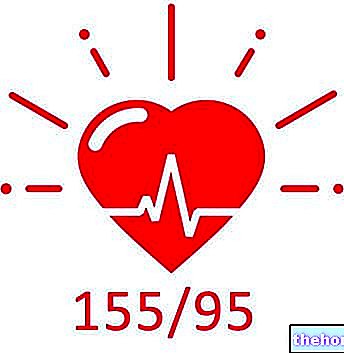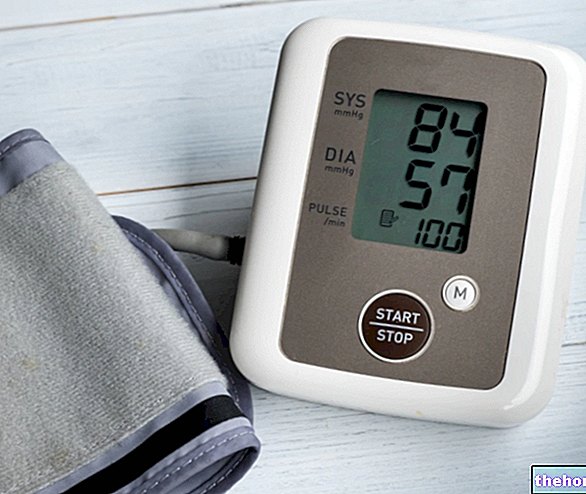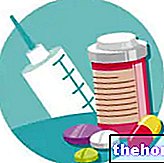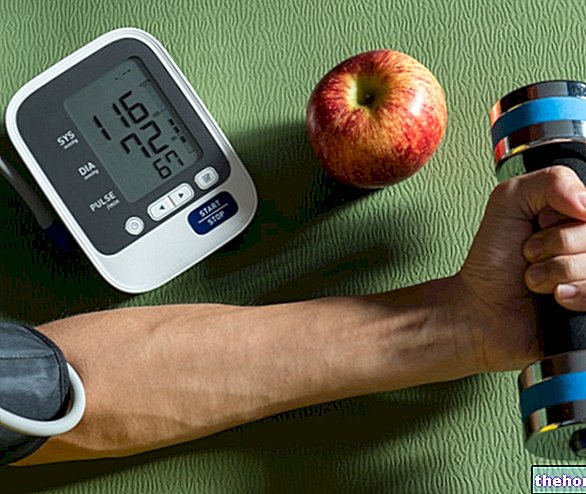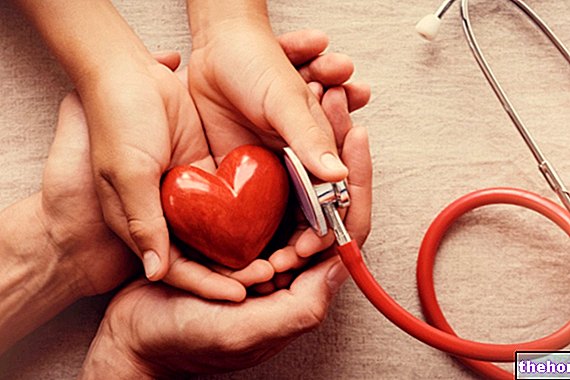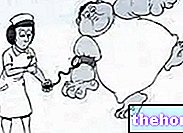Hypertension is a pathology affecting the heart system, characterized by a non-physiological increase in systolic and diastolic blood pressure.
The physiological parameters define a maximum systolic blood pressure equal to 140 mmHg, and a maximum diastolic pressure equal to 90 mmHg. An increased variation of these parameters causes serious problems in the heart, and in the most serious cases it can lead to real structural changes in the heart and vessels; The increase in blood pressure, in fact, irreparably damages the capillary wall, causing serious damage to all the terminal organs, such as the brain, heart, kidneys and eyes. Depending on the degree of increase in blood pressure, it is possible to distinguish:
- A "mild primary hypertension, with a maximum pressure between 140 and 159 mmHg and a minimum pressure between 90 and 99 mmHg;
- A "secondary hypertension of moderate type, with a maximum pressure between 160 and 179 mmHg and a minimum pressure between 100 and 109 mmHg;
- Severe tertiary hypertension, with a maximum pressure equal to or greater than 180 mmHg and a minimum pressure equal to or greater than 110 mmHg.
Primary hypertension, otherwise called essential, does not have a known etiology and is by far the most common form of hypertension; however it seems to be characterized by common risk factors: heredity in 30% of cases; age, more easily found in men over 50; the presence of pathologies such as diabetes and / or hyperglycemia, which causing a thickening of the vessel walls, generating a partial reduction in the vessel caliber and an increase in blood pressure that mainly affects the eye and kidney; hypercholesterolemia; the diuretic and dietary regimes (a diet too rich in salt and saturated fats favors the onset of obesity and hypertension).
Secondary hypertension can have well-identified causes, such as renal artery occlusion, the presence of pheochromocytoma (adrenal tumor), non-physiological increase in adrenaline concentration, Cushing's disease (which induces excessive retention of sodium), or primary hyperaldosteronism (which induces an immoderate increase in mineralocorticoids); in all the cases listed, it is possible to intervene at the origin to cure hypertension.
What does blood pressure depend on? How is it regulated?
According to the so-called hydraulic equation, blood pressure is given by the ratio between:
cardiac output that starts from the left ventricle towards the aorta (this output is in turn influenced by the rate and strength of cardiac contraction);
heart filling pressure dictated by venous return;
peripheral resistance, which increases in proportion to the increase in blood flow.
It is therefore possible to intervene at various levels to reduce blood pressure.
Cardiac output and peripheral resistance are regulated by baroreceptor reflexes, by the tone of the orthosympathetic system with the release of the neurotransmitters adrenaline and noradrenaline, and by the renin-angiotensin system; these phenomena define the so-called endogenous mechanisms of blood pressure control, or modification of cardiac output and peripheral resistance.
The baroreceptors constitute a short-term pressure control mechanism and give rise to an immediate response at the level of the vaso-motor centers; they are pressure receptors located on the vascular walls of the carotids and the aorta, sensitive to distension: when the pressure increases, the wall relaxes and the baroreceptors are activated, sending inhibitory signals to the orthosympathetic system at the bulbar level, with a reduction in noradrenaline and blood pressure. adrenaline (which have a vasoconstrictive effect and increase cardiac output); vice versa, when the pressure is reduced, the baroreceptors are not activated and noradrenaline and adrenaline can regularly act as vasoconstrictor agents in the heart and blood vessels.
The renin-angiotensin system represents the long-term control mechanism of blood pressure changes; when the blood pressure is reduced, renin is produced in the kidney by a group of juxtaglomerular cells, which activates the angiotensinogen to angiotensin; this last molecule exerts a powerful vasoconstrictor effect by increasing peripheral resistance and, moreover, stimulates the secretion of aldosterone in the kidney, favoring the absorption of sodium and water, thus increasing the circulatory volume and bringing blood pressure back to normal levels.
In case of hypertension, one can intervene on these mechanisms with different pharmacological categories.
Other articles on "Hypertension and blood pressure"
- Antiallergic drugs, histamine and antihistamine drugs
- Diuretic drugs

